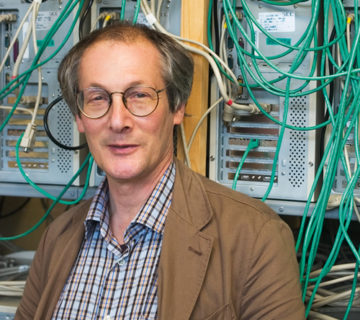
Hans Herrmann Institut für Baustoffe
Anomalous epidemic spreading
The actual Covid-19 epidemics has renewed interest in epidemic models and their coupling to economy and infrastructure. Here simple generalized SIS and SIR models are used to gain insight into the dynamics of an epidemic when the recovery of sick individuals depends on restrictions, as for instance the availability of healing resources that are generated by the healthy population. In this case one finds that an epidemic can spiral out of control into explosive spread, if the cost of recovery is above a critical cost. The onset of explosive epidemics exhibits a discontinuous transition under very general assumptions. Analytical expressions can be given for the critical cost and the size of the explosive jump in infection levels in terms the parameters that characterize the spreading process. The spread of an infection is also investigated when a system component can recover only if it remains reachable from a functioning central unit. More precisely, infection spreads from infected to healthy nodes, with the constraint that infected nodes only recover, if they remain connected to a pre-defined central node, through a path that contains only healthy nodes. This system converges to only one of two stationary states: either the whole population is healthy or it becomes completely infected. Simultaneous cluster infection can give rise to discontinuous jumps of different sizes in the number of failed nodes and local spread can abruptly turn uncontrollable, when it disrupts connectivity at a larger spatial scale. We introduce a general mathematical framework to describe and classify a variety of spreading dynamics. Interestingly, some scenarios turn out to exhibit spontaneous, unpredictable breakdown and recovery cascades. To foster the recovery of damaged or infected systems, we also propose a targeted recovery protocol where least- damaged or infected regions recover first. This can lead to spatial confinement of the infection within a well- defined radius. Finally, the model is adapted to the case of Covid-19 by taking into account the existence of asymptomatic cases, the detection of ill individuals through testing and the cost of testing and medical treatment. By introducing a lockdown period, we show that the final number of deaths can be reduced and find that there exists an optimal starting point for a lockdown.
Video of the lecture



